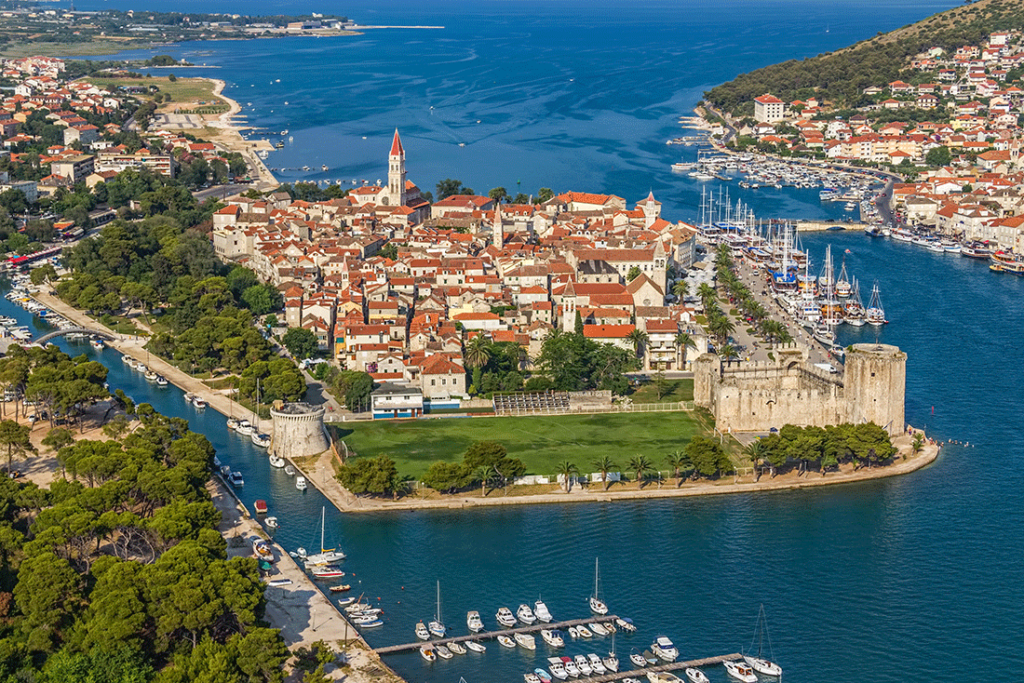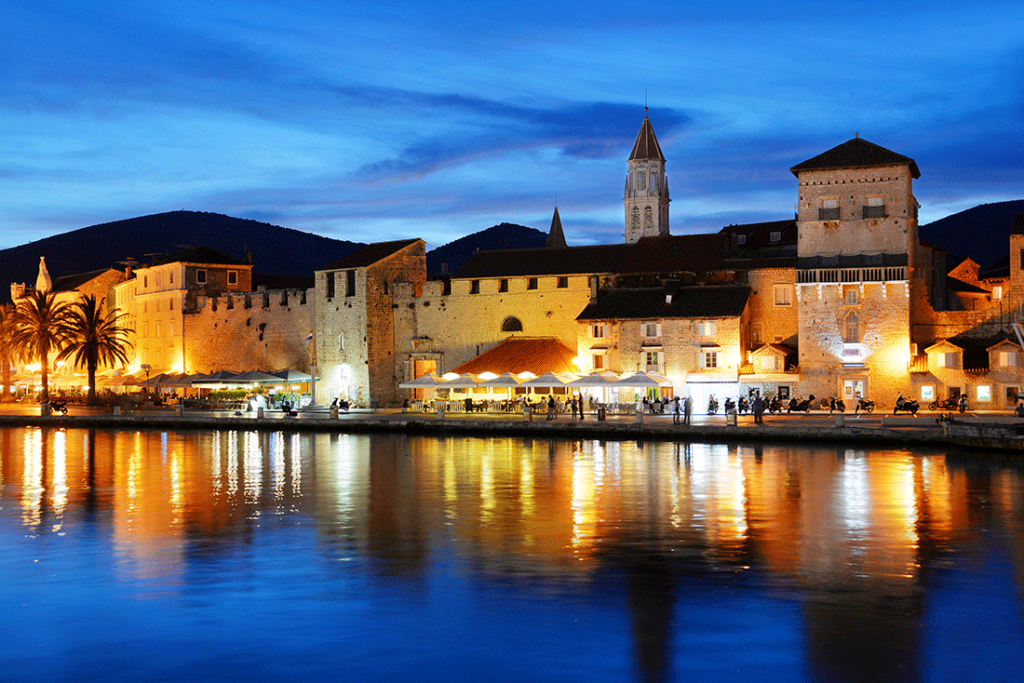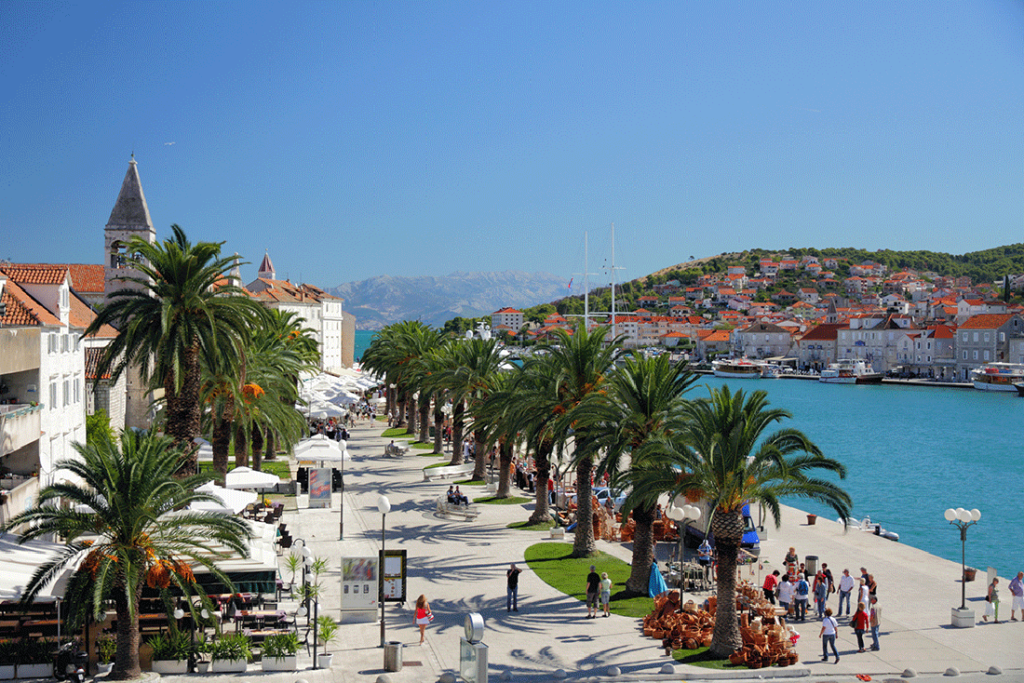ABOUT TROGIR
TROGIR (TRAGURION) was settled by the Greeks in IV-III century BC during theirs hunts across Mediterranean . In the First century AC, Trogir became Roman municipality “TRAGURIUM CIVIUM ROMANORUM” joined to Salona, center of Roman province of Dalmatia . Upon the fall of the Roman Empire in Fifth century, Trogir has been developed as a independent town. In the Sixth century, the Croats settled in Trogir area and began creating works of art. Right from the beginning of the Middle Ages the old Greek town of Tragurion felt the fire of the new medieval culture. Builders and masons built churches and decorated it with interlaced ornamentation. During the Tenth century citizens of Trogir renewed they old municipal life of the formal Roman “oppidum”. In their struggle against the Venetians, the kings of Hungary got Trogir to their side in return for a guarantee of Independence . Its citizens could freely elect their city leaders and, already in the Eleventh century, the small community crowded on the fortified islet, had its own Bishop who was suffrage of the Bishop of Split.




 tourism were employing more then 50% of Trogir citizens. Further development was interrupted by aggression on Croatia 1991, when people of Trogir and its economy suffered serious consequences. Ongoing integration processes in European Community started with UNESCO’s acknowledgement of Trogir as a World cultural Heritage in 1997. Now, on the beginning of the new Millennia, Trogir becomes popular tourist destination as it was in ’80-ies.
tourism were employing more then 50% of Trogir citizens. Further development was interrupted by aggression on Croatia 1991, when people of Trogir and its economy suffered serious consequences. Ongoing integration processes in European Community started with UNESCO’s acknowledgement of Trogir as a World cultural Heritage in 1997. Now, on the beginning of the new Millennia, Trogir becomes popular tourist destination as it was in ’80-ies.